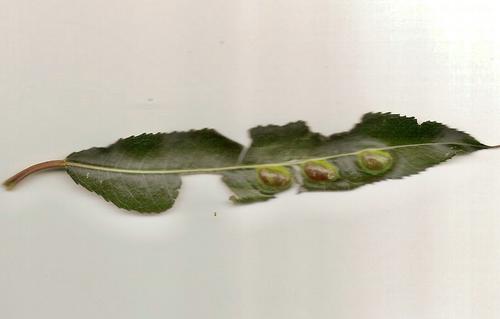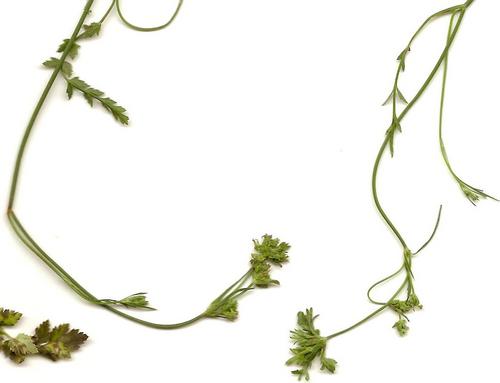New Worcestershire Galls in 2012
J.J. Day
The sawfly Pontania triandrae produces bean galls on the Almond Willow Salix triandra. On 18th September 2012 a bush of Salix triandra was found in wet woodland along the Acton Brook at SO855667 supporting about 20 galls. This appears to be the first record for Worcestershire (Fig. 1.).
Corn Parsley Petroselinum segetum is a scarce Worcestershire plant with only about 20 colonies known. On 12th July 2012 whilst surveying the colony, first located by Brett Westwood in 1991, on the southern embankment of the A38 Droitwich bypass at SO898639, I found several plants, whose inflorescences were apparently galled and infested with mites. I carried the survey eastwards and onto the northern cutting at SO901638, where I located both more Petroselinum segetum (a new hectad record) and more infected inflorescences (Fig. 2.).
There are no named gall causers for Petroselinum segetum in British Plant Galls (Redfern & Shirley 2011) so scanned images and a description were sent to Margaret Redfern. Petroselinum segetum is apparently a new British host species for galls (Margaret Redfern pers comm). The naming of gall causing mites is problematic but the most likely species involved is Aceria peucedani which is the only mite known to gall members of the Apiaceae in Britain.
Reference.
Redfern, M & Shirley, P. 2011. P. British Plant Galls. Field Studies Council, Preston Montford.
Images
Fig. 1. Gall Pontania triandrae, Acton Brook, SO855667, Worcestershire 18/09/2012. J J Day
Fig. 2. Gall on Petroselinum segetum inflorescences probably Aceria peucedani, A38 Droitwich bypass cutting on north side SO901638, Worcestershire 17/07/2012. J J Day

